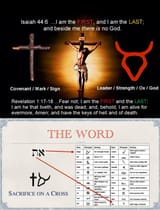>>514025422
The “Invisible Phoenician” Thesis A Compressed Timeline
1) Proto-Canaanite > Phoenician (c. 1500–900 BCE)
Front stage (evidenced): Levantine port cities (Byblos, Sidon, Tyre) master cedar, purple dye, glass, and long-distance trade; they spread a lean alphabet that outcompetes cuneiform/heiroglyphics.
Back stage (speculative): Formation of a maritime cartel: standardized weights, contracts, oath cults, and secrecy. Early use of fear-myths (sea monsters, haunted capes) to keep competitors out of lanes.
2) Israel & “Fracturing Babylon” (c. 1000–600 BCE)
Front: Tyre–Israel royal partnerships (cedar, craftsmen, fleets). Assyria/Babylon crush inland rivals; Aramaic (a Phoenician-derived script) spreads as admin language.
Back: When great land empires overextend, ports survive. The “Babylon system” (temple-silver, priest-ledger) is decentralized into nodes of Phoenician ports and colonies safer, nimbler, harder to tax or kill.
3) Two Arms Emerge Sea (Phoenicia/Carthage) & Land (Persia) (c. 600–330 BCE)
Front: Persia conquers Babylon and relies on Phoenician ships; in the west, Carthage becomes Tyre’s daughter-state.
Back: The “cartel” now has two gloves:
Persia as the land administration shell (roads, satraps, couriers) using Aramaic scripts to scale.
Carthage as the sea monopoly shell (ports, pilots, tin/silver routes).
The two can even clash publicly while preserving the deeper network logic: keep the lanes, keep the ledgers.
4) Greek & Roman Rebrands (c. 800–146 BCE > 400 CE)
Front: Greeks adopt the Phoenician alphabet (add vowels > cultural explosion). After Punic Wars, Rome absorbs Carthaginian routes; coins, law, and roads integrate the sea.
Back: The Melqart > Herakles god-swap, Astarte > Aphrodite - classic myth laundering. Rome becomes the ultimate brand acquisition: it kills Carthage but inherits its operating manual (naval know-how, mercantile finance, port governance). The network changes jersey, not playbook



